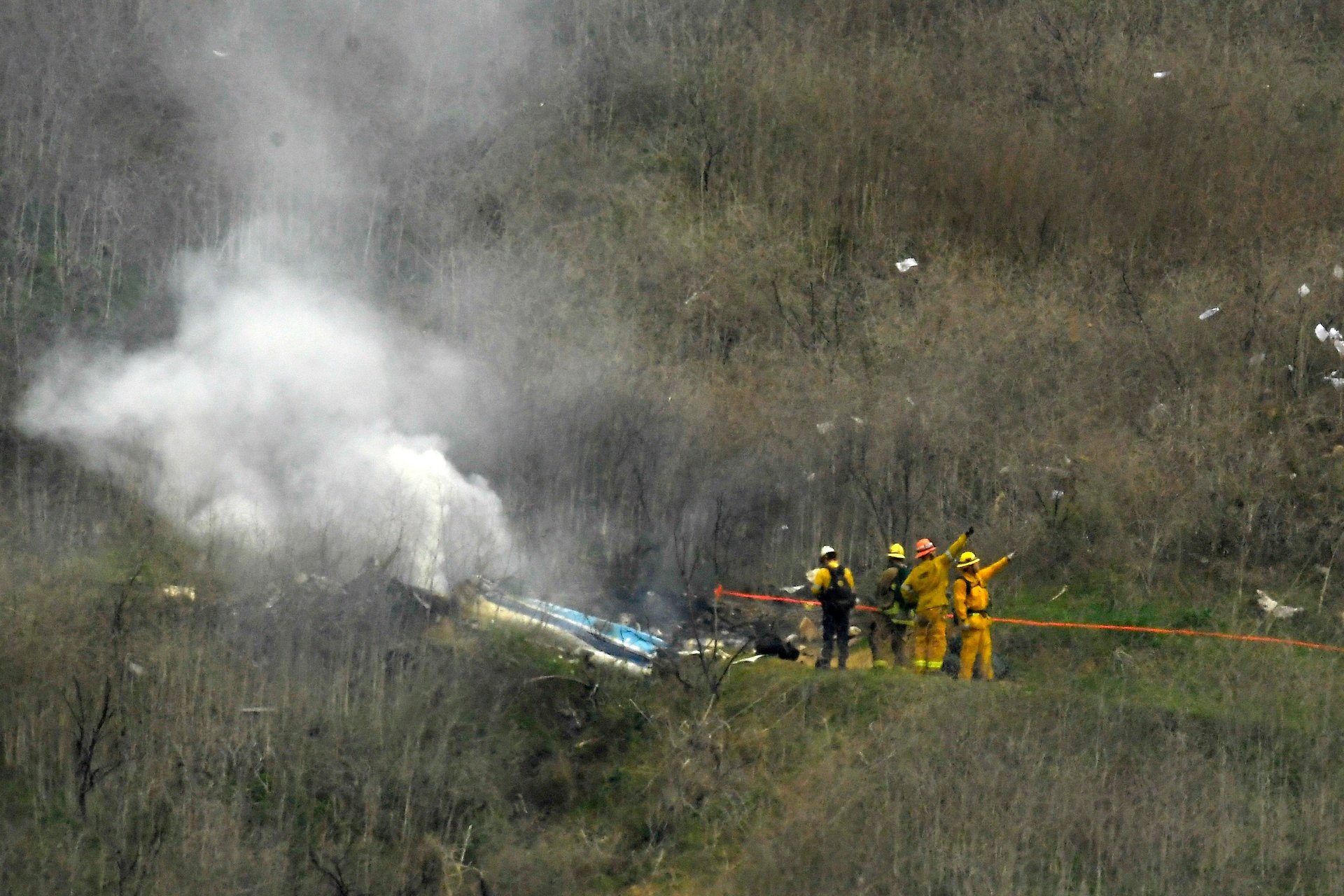Fatal helicopter crashes at low altitude have become more common
On Sunday morning (Jan. 26), US basketball legend Kobe Bryant, his 13-year-old daughter, and seven others died in a helicopter crash about 30 minutes outside Los Angeles. Fatal helicopter accidents of this sort are, happily, quite rare—over the same approximate distance, you’re much more likely to be involved in a fatal accident driving in a car or SUV.


On Sunday morning (Jan. 26), US basketball legend Kobe Bryant, his 13-year-old daughter, and seven others died in a helicopter crash about 30 minutes outside Los Angeles. Fatal helicopter accidents of this sort are, happily, quite rare—over the same approximate distance, you’re much more likely to be involved in a fatal accident driving in a car or SUV.
But over the past few years, even as the fatal accident rate for commercial flights fell dramatically, fatal chopper crashes have actually become more common. The rate of fatal helicopter accidents per 100,000 flight hours jumped from 2016 to 2018, according to data released by the US Helicopter Safety Team (USHST), a volunteer team of government and industry leaders, in March 2019. The number of fatalities per 100,000 hours also rose.
This was especially true of private flights—a category that doesn’t include air taxi services or helicopter charters—with the percentage of fatal private accidents increasing from 22% to 29%. Over the same period, the percentage of fatal helicopter accidents involving air ambulances, commercial flights, and crop dusting fell dramatically—all industries where operators have targeted safety training and increasingly use flight simulators.
According to USHST, the rise in fatal accidents over the past three years is due to more “non-essential low-altitude operations”—low-flying helicopters encountering obstacles such as buildings, power lines, or hills that suddenly appear in the fog. In 2018, these made up 33% of all accidents, up from 15% between 2009 and 2013.
Helicopters are legally allowed to fly much lower than other aircrafts. This is partly because it’s much easier for them to perform emergency landings than it is for other aircrafts. On top of that, they’re often used by law enforcement and emergency medical service agencies, requiring a bit of leeway from the Federal Aviation Authority (FAA).
While investigators have yet to determine the precise cause of the crash that killed Bryant, fog and clouds seem to have played a significant part, with the pilot initially flying at less than 500 feet above the ground before soaring upwards. Eventually, in extremely limited visibility, it hit a steep hillside near the Las Virgenes Municipal Water District facility at 184 mph. Los Angeles police had opted not to fly their own choppers that morning due to the challenging weather conditions.
Air taxi enthusiasts point to the new technology, which has been heavily supported by companies such as Uber, as a safer alternative from a technical perspective. Unlike helicopters, which have a single point of failure at their main rotor retaining nut, the fixed-wing, electric or hybrid-electric air taxis of the sort currently in development are less vulnerable to already rare single-part failure. While this might improve safety from a technical perspective, it may not make much difference in the event of low-visibility, low-altitude conditions common in many helicopter crashes.